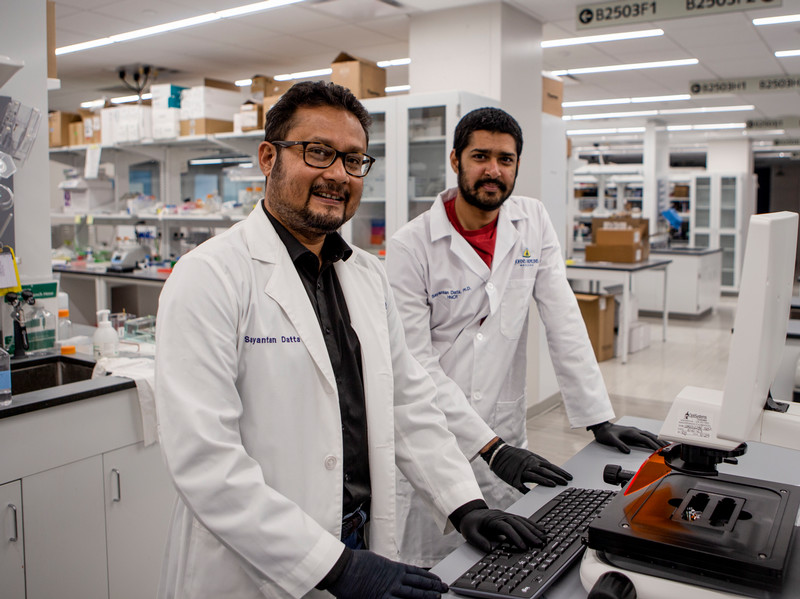New AMD research shows promise

Research from the lab of Sayantan Datta, PhD has identified a potential therapeutic option for age-related macular degeneration (AMD), an incurable eye disease that is the leading cause of vision loss for people over the age of 50.
Datta and his colleague, Ganesh Satyanarayana, PhD said their findings indicated that a widely available nutritional supplement, serine, could be the key to a future AMD treatment that is both affordable and accessible the world over.
“Our preliminary study suggests serine in combination with another widely used supplement, AREDS-2, is more effective than AREDS-2 alone,” Datta said. “This is an ongoing work and will need more work to firmly establish this, but it is very encouraging.”
AMD causes the gradual degeneration of the macula, a part of the retina that controls the sharpness of a person’s central field of vision. Up until recently, the only treatment for dry AMD involved AREDS-2, an over-the-counter nutritional supplement.
In 2023, two new injectable drugs pegcetacoplan (“PEG”) and avacincaptad were approved by the FDA, but they are more invasive and costlier than serine, an over-the-counter supplement.
In their study, “Serine Metabolism as a Therapeutic Target for Dry AMD” Datta and Satyanarayana found animal subjects who exhibited three hallmark AMD symptoms (retinal pigment epithelium (RPE) dysmorphology, basal laminar deposits, and metabolic distress) experienced improved overall retinal function when they ingested serine supplements.
Unlike many previous AMD studies, the duo deliberately used older mice, to mimic AMD’s occurrence in the human population.
What they saw was that the serine reduced or neutralized reactive oxygen species (ROS) molecules - the free radicals that previous studies had shown were capable of causing RPE dysmorphology and cell death.
“We had improved retinal function: it prevented the progression of the disease, possibly restoring some of what was lost. So, we think serine should also improve visual acuity,” Datta observed. “But that will be our next study, to determine whether the subjects have better sight.”
Echoed his colleague:
“Yes. We have recently obtained an opto-kinetic response machine that we will use to test visual acuity, and, eventually, we also want to test serine with AREDS to see if they work better together.”
Both researchers look forward to future studies, which will look at possible side effects that are not immediately visible, such as serine’s potential impact on heart, kidney or liver function. They also anticipate gaining some insight on proper human dosing amounts for serine from their colleague, Dr. Jiong Yan, who is currently a part of a clinical trial to establish the safe dose of serine as a treatment for another form of macular degeneration - MacTel type 2.
-- Kathleen E. Moore

